The Tatra Museum was set up in 1888 by a group of friends of Dr Tytus Chałubiński (1820-1889) to celebrate him as the discoverer of the values of Zakopane as a health resort. Dr Tytus Chałubiński was an outstanding Warsaw physician, scientist and social activist, a great admirer of the Tatra Mountains and the folklore of the local people. The Tatra Museum Society (Towarzystwo Muzeum Tatrzańskiego – TMT) was set up to raise money and further the development of the museum. The first exhibition was held in a now non-existent building on Krupówki Street, which was rented by the Society. The earliest holdings, covering the fields of botany, geology, zoology and ethnography, plus a library, resulted from donations and the purchases of entire private collections.
Some collections in the Podhale region were made accessible to the public even before the foundation of the Tatra Museum. In the 1860s, the then few tourists could see a collection of Tatra birds and mammals put on display by the Zakopane landowner, Edward Homolacs. In 1876, the Tatra Society made the first steps towards setting up a ‘Tatra museum’. The earliest local private collections of folk arts and crafts came into being in the 1880s. Collectors of ethnographic items included Countess Róża Raczyńska née Potocka, Bronisław and Maria Dembowski, and Zygmunt Gnatowski, all of them spent part of each year in Zakopane due to their interest in the Podhale region. Their collections were later incorporated with the Tatra Museum.
In 1892 a museum building, designed by Warsaw architect Józef Pius Dziekoński, was built on the Society’s initiative, which was made possible thanks to a donation to the Society from the heirs of Dr Tytus Chałubiński. The collection was transferred to the new museum building on Chałubińskiego street in the same year. During the late 19th/early 20th century the Museum Society encountered financial problems due to the decline in membership and the high cost of the new Museum building. In 1900 the press criticized the Museum and especially its ethnographic department for the haphazard choice and unimaginative display of exhibits.
This troubled period ended after a few years, when activities developed in two directions; one aimed at the raising of funds for the erection of a new building as a result of donations and bequests, the other the increase of collections. The influx of funds was quite substantial thanks to the generosity of a number of people including the Society’s President, Zygmunt Gnatowski and Kazimierz and Bronisława Dłuski. Parallel efforts to prepare a design for the museum building continued. In 1911 the Society accepted the design provided by professional architect Franciszek Mączyński. It was severely criticized by Stanisław Witkiewicz, the creator of the Zakopane style, whose opinion the Society had sought. Eventually Franciszek Mączyński was asked to provide a technical design for a building in the Zakopane style based on Stanisław Witkiewicz’s concept. The construction of the new building, started in 1913, was suspended after the outbreak of World War I and resumed by the Society when the war ended despite the country’s difficult economic condition. In 1920 the building was ready to house the collection.
In the same year, Juliusz Zborowski, a linguist and grammar school master in Nowy Targ and also an expert in the folk culture of the Podhale region, became President of the Tatra Museum Society. In 1921 he was appointed manager of the Museum and custodian of the ethnographic department. In 1922 Maria Dembowska donated a large ethnographic collection of about four hundred items to the Museum. The donors wished the collection to be displayed in a typical Tatra Highlander’s cottage, which was only partly carried into effect for lack of resources: a life-sized cottage model, giving the visitor an insight into two rooms, the ‘black’ and ‘white’ chambers, separated by a vestibule, was installed in an exhibition room on the ground floor. The collection was displayed in this novel manner. The Tatra Museum was inaugurated in summer 1922. Two permanent exhibitions were opened to the public in the new building: an ethnographic exhibition on the ground floor and a natural history exhibition on the first floor. Organizational changes were introduced at the time, as a result of which the Society Board, until then the only body responsible for the Museum, conferred some of its functions on the management. A board of curators was appointed to supervise the activities of the Museum from a scholarly point of view. A period of financial stability followed – though the Museum was not nationalized after Poland regained independence, it could rely for support on the Department of Science and state subsidies. According to pre-war plans, a centre of multidisciplinary research on the Tatra Mountains and Podhale region was to be launched in the Museum. However, the concept was basically revised after the war: research of this kind was conducted at other centres while the Museum’s contribution consisted in providing accommodation for visiting scholars. Thanks to the operation of the ‘Tatra Museum Grand Hotel’, as the guest rooms were jocularly called, the Museum became a peculiar centre of research on the Tatra Mountains and the region of Podhale.
During the interwar period the Museum operated with much impetus under the direction of Juliusz Zborowski and its holdings were considerably increased despite financial difficulties. In the late 1920s Juliusz Zborowski planned to open three new departments: of contemporary art, handicrafts and the history of the region. However, his plans were thwarted due to the outbreak of World War II, during which the museum remained open but its activities were suspended. Despite the war’s destruction elsewhere, the Museum was fortunate enough to survive World War II unimpaired.
Following the ceasfire, Juliusz Zborowski sought to engage the Tatra Museum in the protection of nature and historic monuments. The Museum collaborated with various bodies and organizations, such as the State Council for the Protection of Nature, the Polish Tatra Society and its Section for the Protection of the Tatra Mountains, and the Chief Conservationist of Monuments for the Cracow region. A new regional museum network emerged as a result of this collaboration with the Conservationist of Monuments. Juliusz Zborowski attached considerable importance to the development of the library’s holdings. A dedicated bibliophile, he ran the library himself, gathering a valuable collection of books, prints, maps, and photographs. Under his direction, the Museum’s publishing activity began as early as the 1920s. The first publication was the Rocznik Podhalański (Podhale Yearly), the next issues of which appeared after the war.
The Tatra Museum was nationalized in 1950. Thanks to a larger staff of full-time employees and some financial stability, systematic field research projects were launched and the holdings developed in a scholarly direction. A collection-based art department was also opened.
After the setting up of the Tatra National Park in 1954, the Museum’s interests shifted somewhat away nature conservation, though the Museum’s commitment to the conservation of monuments continued. Two branches of the museum were opened; one presenting the ethnographic collection of the Szymański family, the other, memorabilia of the well-known writer, Kornel Makuszyński.
Juliusz Zborowski was in charge of the Tatra Museum until 1965. As the first director, he worked out a coherent programme for the Museum, and carried the projects into effect. In the following years, the Museum was systematically broadened to include new departments. In the 1970s, when the Museum was run by Tadeusz Szczepanek, a department for the protection of monuments was launched to supervise the renovation of monuments in the area covered by the Museum’s activities. Under the current stewardship of Teresa Jabłońska, the Museum’s activities have been developed. In 1993, the Museum of Zakopane Style at “Koliba” villa opened. After the political changes in Poland in 1989, more intense publishing activity became possible. The Tatra Museum Society was reactivated with the view to supporting the initiatives of the Tatra Museum.
During the last few years some major exhibitions have been realized, such as Rafał Malczewski and the Myth of Zakopane, executed in cooperation with the National Museum in Warsaw, and The Halny Wind. The Tatra Mountains in 19th and 20th-Century Polish Paintings, with the Pomeranian Dukes’ Castle in Szczecin.


